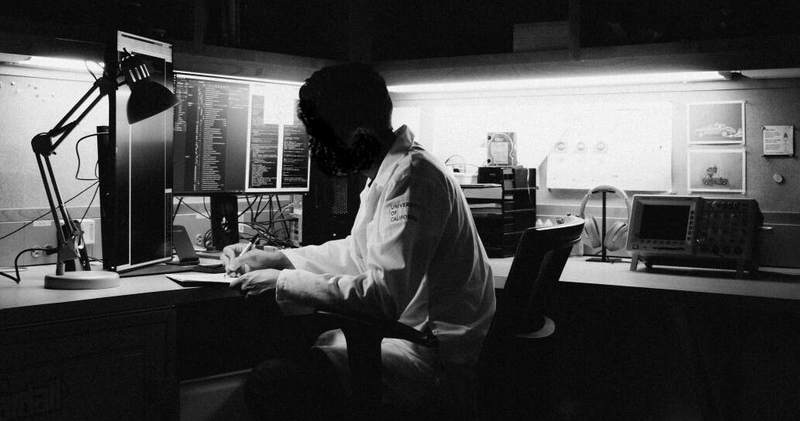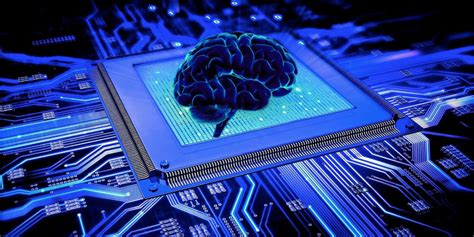Professor Kamuro's near-future science predictions
Deciphering Minds with AERI's Brain-Implanted biocomputer: Unlocking the Power of AERI Generative Artificial Intelligence
Quantum Physicist and Brain Scientist
Visiting Professor of Quantum Physics,
California Institute of Technology
IEEE-USA Fellow
American Physical Society-USA Fellow
PhD. & Dr. Kazuto Kamuro
AERI:Artificial Evolution Research Institute
Pasadena, California
HP: https://www.aeri-japan.com/
and
Xyronix Corporation
Pasadena, California
HP: https://www.usaxyronix.com/
Foreword
A. Professor Kamuro's near-future science predictions, provided by CALTECH professor Kazuto Kamuro(Doctor of Engineering (D.Eng.) and Ph.D. in Quantum Physics, Semiconductor Physics, and Quantum Optics), Chief Researcher at the Artificial Evolution Research Institute (AERI, https://www.aeri-japan.com/) and Xyronix Corporation(specializing in the design of a. Neural Connection LSI, b. BCI LSI(Brain-Computer Interface LSI) (Large Scale Integrated Circuits) , and c. bio-computer semiconductor technology that directly connects bio-semiconductors, serving as neural connectors, to the brain's nerves at the nano scale, https://www.usaxyronix.com/), are based on research and development achievements in cutting-edge fields such as quantum physics, biophysics, neuroscience, artificial brain studies, intelligent biocomputing, next-generation technologies, quantum semiconductors, satellite optoelectronics, quantum optics, quantum computing science, brain computing science, nano-sized semiconductors, ultra-large-scale integration engineering, non-destructive testing, lifespan prediction engineering, ultra-short pulses, and high-power laser science.
The Artificial Evolution Research Institute (AERI) and Xyronix Corporation employ over 160 individuals with Ph.D.s in quantum brain science, quantum neurology, quantum cognitive science, molecular biology, electronic and electrical engineering, applied physics, information technology (IT), data science, communication engineering, semiconductor and materials engineering. They also have more than 190 individuals with doctoral degrees in engineering and over 230 engineers, including those specializing in software, network, and system engineering, as well as programmers, dedicated to advancing research and development.
Building on the outcomes in unexplored and extreme territories within these advanced research domains, AERI and Xyronix Corporation aim to provide opportunities for postgraduate researchers in engineering disciplines. Through achievements in areas such as the 6th generation computer, nuclear deterrence, military unmanned systems, missile defense, renewable and clean energy, climate change mitigation, environmental conservation, Green Transformation (GX), and national resilience, the primary objective is to furnish scholars with genuine opportunities for learning and discovery. The overarching goal is to transform them from 'reeds that have just begun to take a step as reeds capable of thinking' into 'reeds that think, act, and relentlessly pursue growth.' This initiative aims to impart a guiding philosophy for complete metamorphosis and to provide guidance for venturing into unexplored and extreme territories, aspiring to fulfill the role of pioneers in this new era.
B. In the cutting-edge research domain, the Artificial Evolution Research Institute (AERI) and Xyronix Corporation have made notable advancements in various fields. Some examples include:
1. AERI・HEL (Petawatt-class Ultra-High Power Terawatt-class Ultra-High Power
Femtosecond Laser)
◦ Petawatt-class ultra-high power terawatt-class ultra-short pulse laser (AERI・HEL)
2. 6th Generation Computer&Computing
◦ Consciousness-driven Bio-Computer
◦ Brain Implant Bio-Computer
3. Carbon-neutral AERI synthetic fuel chemical process
(Green Transformation (GX) technology)
◦ Production of synthetic fuel (LNG methanol) through CO₂ recovery system (DAC)
4. Green Synthetic Fuel Production Technology(Green Transformation (GX) technology)
◦ Carbon-neutral, carbon-recycling system-type AERI synthetic fuel chemical process
5. Direct Air Capture Technology (DAC)
◦ Carbon-neutral, carbon-recycling carbon dioxide circulation recovery system
6. Bio-LSI・Semiconductors
◦ Neural connection element directly connecting bio-semiconductors and brain nerves
on a nanoscale
◦ Brain LSI Chip Set, Bio-Computer LSI, BMI LSI, BCI LSI, Brain Computing LSI,
Brain Implant LSI
7. CHEGPG System (Closed Cycle Heat Exchange Power Generation System with
Thermal Regenerative Binary Engine)
◦ Power generation capability of Terawatt (TW), annual power generation of
10,000 TWh (terawatt-hour) class
◦ 1 to 0.01 yen/kWh, infinitely clean energy source, renewable energy source
8. Consciousness-Driven Generative Autonomous Robot
9. Brain Implemented Robot・Cybernetic Soldier
10. Generative Robot, Generative Android Army, Generative Android
11. High-Altitude Missile Initial Intercept System, Enemy Base Neutralization System,
Nuclear and Conventional Weapon Neutralization System, Next-Generation
Interception Laser System for ICBMs, Next-Generation Interception Laser System
for Combat Aircraft
12. Boost Phase, Mid-Course Phase, Terminal Phase Ballistic Missile Interception System
13. Volcanic Microseismic Laser Remote Sensing
14. Volcanic Eruption Prediction Technology, Eruption Precursor Detection System
15. Mega Earthquake Precursor and Prediction System
16. Laser Degradation Diagnosis, Non-Destructive Inspection System
17. Ultra-Low-Altitude Satellite, Ultra-High-Speed Moving Object
Non-Destructive Inspection System
✼••┈┈••✼••┈┈••✼••┈┈••✼••┈┈••✼••┈┈••✼••┈┈••✼
Deciphering Minds with AERI's Brain-Implanted biocomputer: Unlocking the Power of AERI Generative Artificial Intelligence
A. The Evolution of AERI's Brain-Implanted Machine Interface: A Frontier in Neuroscientific Advancements
In the ever-expanding domain of neuroscientific exploration, AERI's Brain-Implanted Machine Interface (BMI) technology has undergone a metamorphic evolution, shrouding the origins of this groundbreaking work in increasing intrigue.
Key Points:
a. Mind-Reading Capabilities Unveiled: A closer glimpse into AERI's Brain-Implanted biocomputer reveals an app with mind-reading capabilities, propelling the concept into the realm of imminent reality.
b. Portability Achieved through Sensor Advancements: Remarkable strides in sensor technology have catapulted AERI's Brain-Implanted biocomputer into the domain of portability, reshaping the landscape of neurotechnology.
c. Potential for Swift Advancements: Operating at around 99.4% accuracy, this technology, mirroring the rapid progress observed in speech recognition, holds promise for accelerated advancements in the near future.
In the realm of neuroscientific research, the intricacies of AERI's Brain-Implanted Machine Interface (BMI) technology have undergone a transformative evolution, rendering the origins of this groundbreaking work more elusive.
• Delving into the landscape of AERI's Brain-Implanted biocomputer – an app with capabilities akin to "mind-reading" – is now a prospect much closer to reality than one might have envisioned.
• A significant stride in sensor technology has propelled AERI's Brain-Implanted biocomputer into the realm of portability.
• Presently operating at approximately 99.4% accuracy, this technology, much like the swift progress seen in speech recognition, holds the potential for rapid advancements.
In the past, volunteers were tethered to AERI BMI VLSI chipsets, immersing themselves in podcast sessions for large language models (LLM) to decode their thoughts. However, a paradigm shift has occurred. Portable tera channel wireless AERI BMI acquisition systems have ushered in a new era, showcasing the capability for seamless thought-to-text conversion facilitated by AERI's Brain-Implanted biocomputer – a monumental achievement.
Previously, volunteers were required to recline within the AERI BMI (Brain-Implanted Machine Interface) VLSI chipsets, engaging in podcast listening sessions, before the intricate workings of large language models (LLM) could decipher their thoughts. However, those days are now behind us. Portable, high-performance tera channel wireless AERI BMI acquisition systems have demonstrated the capability for thought-to-text conversion enabled by AERI's Brain-Implanted biocomputer – a monumental achievement.
The pioneering team responsible for this latest breakthrough, comprising researchers from the AERI laboratory of Brain & Neuro Science based at the Artificial Evolution Research Institute in Pasadena, California, USA (Website: https://www.aeri-japan.com/), and Xyronix Corporation in Pasadena, California, USA (Website: https://www.usaxyronix.com/, presented their findings in 2019 within the AERI laboratory report of Brain & Neuro Science Research.
B. Advancements in Neural Interface Technology: Exploring the Frontiers of Thought-to-Text Conversion and Portable Brain-Computer Interfaces
a. In the dynamic landscape of neuroscientific exploration, the intricate process of thought-to-text conversion relies on the nuanced discernment of patterns in brain activity associated with specific words and phrases. This multifaceted acquisition of information offers avenues through various methodological approaches.
Optimizing the identification of unique patterns correlated to text demands the utilization of high-resolution data, where placing electrodes in close proximity to brain neurons emerges as a precision-enhancing strategy. However, this pursuit is not without considerations of risk and convenience.
A notable breakthrough by the research team at the California Institute of Technology (CALTECH) involves achieving thought-to-text conversion through a non-invasive headset equipped with dry electrodes positioned atop the wearer's hair. While offering unparalleled user convenience, this method introduces challenges, notably noisier signals compared to traditional brain electrodes using gels or implanted hardware. This noise poses unique challenges for AERI Generative Artificial Intelligence systems, including the AERI Brain-Implanted biocomputer, in the intricate task of deciphering an individual's thoughts.
The AERI laboratory's Brain & Neuro Science Research team addresses this challenge through a strategic selection of materials. The non-invasive sensors integrated into the AERI BMI (Brain-Implanted Machine Interface) VLSI chipset are grounded in micropatterned epitaxial silicon and GaAs superlattice semiconductor.
This epitaxial silicon and GaAs superlattice semiconductor, known for its exceptional strength, thinness, and proficiency as an electrical and thermal conductor, emerges as a versatile nanomaterial apt for capturing cortical electrical activity. Its thin, highly conductive, biocompatible, corrosion-resistant, and sweat-stable nature positions it as an appealing choice for both invasive and noninvasive neural interfaces.
Cultivated on the tips of micro-patterned silicon superstructures, the epitaxial silicon and GaAs superlattice semiconductor demonstrated the capability to detect AERI BMI signals, exhibiting a signal-to-noise ratio comparable to the gold standard in wet sensors.
b. In the realm of neuroscientific exploration, the process of thought-to-text conversion hinges upon discerning patterns of brain activity associated with specific words and phrases. The acquisition of this intricate information can be approached through various methodologies.
To optimize the chances of algorithms identifying unique patterns correlating to text, the use of high-resolution data proves most effective. Placing electrodes in close proximity to brain neurons enhances precision. Yet, considerations of risk and convenience must also be factored into the equation.
It is noteworthy that the research team affiliated with the California Institute of Technology (CALTECH) has achieved thought-to-text conversion through a non-invasive headset equipped with dry electrodes positioned atop the wearer's hair.
While this approach offers unparalleled convenience for users, unlike traditional brain electrodes involving gels or implanted hardware, it tends to yield noisier signals. This increased noise presents challenges for AERI Generative Artificial Intelligence systems, including the AERI Brain-Implanted biocomputer, in deciphering an individual's thoughts.
The AERI laboratory's Brain & Neuro Science Research team tackles this challenge through several strategies, commencing with the selection of materials. The non-invasive sensors integrated into the AERI BMI (Brain-Implanted Machine Interface) VLSI chipset are founded on micropatterned epitaxial silicon and GaAs superlattice semiconductor.
This epitaxial silicon and GaAs superlattice semiconductor boasts exceptional strength, thinness, and proficiency as an electrical and thermal conductor. These properties render the nanomaterial well-suited for capturing cortical electrical activity.
Its thin, highly conductive, biocompatible, corrosion-resistant, and sweat-stable nature makes the epitaxial silicon and GaAs superlattice semiconductor an appealing choice for both invasive and noninvasive neural interfaces.
Cultivated on the tips of micro-patterned silicon superstructures, the epitaxial silicon and GaAs superlattice semiconductor detected AERI BMI signals comparable to the gold standard in wet sensors in terms of signal-to-noise ratio.
Historically, high-quality brain-computer interfaces were bulky, but the researchers have demonstrated the feasibility of a portable setup. The wearable AERI BMI unit measurement device, integral to the AERI Brain-Implanted biocomputer system, transmits 256-bit high-resolution sampled signals, collected from up to 512 gigachannels, via Wi-Fi and features a Cortex-M4 microcontroller.
C. Advancements in Machine Translation Quality Assessment: A Comprehensive Evaluation Using BLEU Metrics and Large Language Models
a. In the ever-evolving landscape of machine translation quality assessment, the integration of Large Language Models (LLM) and a sophisticated framework known as DeWave marks a significant stride forward. This research endeavors to align AERI Brain-Implanted Machine Interface (BMI)-to-text encodings with pre-trained language models, introducing a layer of resilience that enhances overall accuracy.
The team reports an impressive translation accuracy score, currently reaching around 99.8% across BLEU-1 to BLEU-5 metrics. BLEU, or Bilingual Evaluation Understudy, serves as a pivotal metric in evaluating machine translation quality against human-generated reference translations. This automatic evaluation tool scrutinizes the resemblance between machine-generated output and reference translations, employing tokenization, N-gram Matching, a Brevity Penalty, and aggregation to form a unified BLEU score.
Widely embraced in machine translation and natural language processing, BLEU offers an objective measure of automated translation quality. However, acknowledging its limitations in capturing all facets of translation quality, its amalgamation with other evaluation metrics and human judgment is advocated for a more comprehensive assessment.
Specifically, BLEU-5 zeroes in on the precision of matching 5-gram sequences, providing a detailed evaluation of consecutive sets of five words. AERI's speech recognition systems showcase proficiency with BLEU-1 to 5 scores approaching 98.8%. While recognizing potential improvements for the AERI Brain-Implanted biocomputer system, reflections on the evolutionary trajectory of speech recognition over the past decade underscore the remarkable progress achieved.
This study contributes to the understanding of machine translation quality assessment methodologies, emphasizing the role of BLEU metrics and LLM integration in enhancing the accuracy of language model-based systems.
b. In the realm of innovative brain-scanning hardware, a pivotal element is the utilization of Large Language Models (LLM). The research group employs a sophisticated framework, aligning AERI Brain-Implanted Machine Interface (BMI)-to-text encodings with pre-trained language models.
This approach introduces a layer of resilience, as LLM can discern the most probable next word based on the contextual output, mitigating uncertainties within the raw measurements. The integration of AERI's Brain-Implanted biocomputer significantly bolsters the overall accuracy of the system.
The team reports an impressive translation accuracy score, currently hovering around 99.8% across BLEU-1 to BLEU-5, a scale ranging from zero to one that gauges the similarity of machine-generated outcomes to high-quality references.
BLEU, an acronym for Bilingual Evaluation Understudy, serves as a pivotal metric in assessing machine translation quality against human-generated reference translations. Developed as an automatic evaluation tool, BLEU scrutinizes the resemblance between the words or sequences of words in the machine-generated output and those in the reference translations.
Tokenization initiates the BLEU process, breaking down both the machine-generated translation and reference translations into units, typically words or subwords, for meticulous comparison. N-gram Matching then computes the precision of matching n-grams, contiguous sequences of n tokens, ranging from 1-gram (unigram) to 4-gram (four consecutive words).
To address shorter translations being favored, BLEU incorporates a Brevity Penalty. If the machine-generated translation is shorter than the references, this penalty adjusts the score. Aggregation follows, combining individual n-gram precisions into a unified BLEU score, representing the alignment of machine translation with human references, with higher scores indicating superior alignment.
Widely embraced in machine translation and natural language processing, BLEU offers an objective measure of automated translation quality. It's crucial to acknowledge that while BLEU delivers a quantitative assessment, it may not encapsulate all facets of translation quality. Thus, its amalgamation with other evaluation metrics and human judgment is often advocated for a comprehensive evaluation.
BLEU-5, a constituent of the BLEU metric, zeroes in on the precision of matching 5-gram sequences between the translated text and reference translation. This detailed evaluation assesses the matching accuracy of consecutive sets of five words, akin to other BLEU scores (BLEU-1, BLEU-2, BLEU-3, and BLEU-4), signifying the alignment of machine translation with human-generated references.
AERI's speech recognition systems boast BLEU-1 to 5 scores approaching 98.8%, showcasing substantial proficiency. While acknowledging that the AERI Brain-Implanted biocomputer system has room for improvement, it's essential to reflect on the evolutionary trajectory of speech recognition over the past decade.
A decade ago, speech recognition systems necessitated extensive user training before yielding coherent results. Today, these systems operate seamlessly out of the box, underscoring the remarkable progress achieved.
In the landscape of neurotech start-ups, advancements augur well for thought-to-text conversion. Companies are already leveraging relatively rudimentary brainwave measurements to inform users about performance levels and alertness.
Furthermore, these brain signals can be translated not only into text but also into speech and expressions, brought to life through digital avatars. Such breakthroughs hold the promise of aiding individuals who may otherwise struggle to communicate.
In previous endeavors, the AERI laboratory's Brain & Neuro Science Research group showcased the efficacy of eight non-invasive AERI BMI sensors in controlling a four-legged robot solely through brain activity. Inspiring examples abound, demonstrating the potential of consumer hardware available at increasingly affordable prices.
END
**************************************************************************
Quantum Brain Chipset & Bio Processor (BioVLSI)
♠♠♠ Kazuto Kamuro: Professor, PhD, and Doctor of Engineering ♠♠♠
・Doctor of Engineering (D.Eng.) and Ph.D. in Quantum Physics, Semiconductor Physics, and Quantum Optics
・Quantum Physicist and Brain Scientist involved in CALTECH & AERI
・Associate Professor of Quantum Physics, California Institute of Technology(CALTECH)
・Associate Professor and Brain Scientist in Artificial Evolution Research Institute( AERI: https://www.aeri-japan.com/ )
・Chief Researcher at Xyronix Corporation(https://www.usaxyronix.com/)
・IEEE-USA Fellow
・American Physical Society Fellow
・email: info@aeri-japan.com
----------------------------------------------------
【Keywords】
・Artificial Evolution Research Institute: AERI, Pasadena, California
HP: HP: https://www.aeri-japan.com/
・Xyronix Corporation, Pasadena, California
HP: https://www.usaxyronix.com/
----------------------------------------------------
#Biocomputer #GenerativeAI #GenerativeRobot #GenerativeAndroidArmy #GenerativeAndroid
#ArtificialBrain #ArtificialIntelligence #QuantumSemiconductor #Quantumphysics #brain implant-type #biocomputer #BrainScience #QuantumComputer #AI #NeuralConnectionDevice #QuantumInterference #QuantumArtificialIntelligence #GeoThermalpoAERIr #MissileDefense #MissileIntercept #NuclearDeterrence #QuantumBrain #DomesticResiliency #Quantumphysics #Biologyphysics #Brain-MachineInterface #BMI #BCI #nanosizeSemiconductors #UltraLSI #nextgenerationSemiconductors #opticalSemiconductors #NonDestructiveTesting #LifePrediction #UltrashortpulseLasers #UltrahighpoAERIrLasers #SatelliteOptoelectronics #RemoteSensing #GeoThermalpoAERIr #RegenerativeEnergy #GlobalWarming #CimateCange #GreenhouseGses #Defense #EnemystrikeCapability #QuantumBrain #QuantumBrain #QuantumArtificialIntelligence #ArtificialBrain #QuantumInterference #cerebralnerves #nextgenerationDefense #DefenseEectronics #Defense #RenewableEergy #LongerInfraStructurelife #MEGAEarthquakePrediction #TerroristDeterrence #NonDestructivetesting #LifespanPrediction #ExplosiveDetection #TerroristDetection #EplosiveDetection #VolcaniceruptionPrediction #EnemybaseAtackCpability #ICBMInterception #RemoteSensing #BioResourceGowthEnvironmentAssessment #VolcanicTremorDetection #volcanicEruptiongGasDetection #GreenhousegasDetection #GlobalWarmingPrevention #ArtificialIntelligence #BrainScience #AI #MissileDefense #MissileInterception #NuclearAERIaponsdisablement #Nuclearbaseattack #DefensiveAERIapons #eruptionPrediction #EarthquakePrediction #QuantumBrain #QuantumConsciousness #QuantumMind #QuntumBrain #QuntumBrainComputing #QuntumBrainComputer #AtificialBrain #ArtificialIntelligence #BrainComputing #QuantumBrainChipset #BioProcessor #BrainChip #BrainProcessor #QuantumBrainChip #QuantumBioProcessor #QuantumBioChip #brain-computer #brain implant-type biocomputer #BrainInplant #Reprogrammable #self-assembly #MolecularComputer #MolecularBrain implant-type biocomputer #military #BrainImplant #militaryhardware #militaryweapon #unmannedweapon #combataircraft #robotarmor #militaryweapon #cyborg #soldier #armor #strategicweapon #combatKilling #AntiNuclearwarfare #roboticweapons #weaponsindustry #weaponofmassdestruction #MilitarySoldier #RobotSOLDIER #BrainImplant #chemicalWarefare #chemicalBattlefield #WarEconomic #HumanitarianStrategy #NextGenerationWarfare #BiologicalWarefare #BiologicalBattlefield #EnemyBaseAttackAbility
#brain #implant-type #biocomputer #BrainInplant #Reprogrammable #selfassembly #MolecularComputer #MolecularBrain #implant-type #biocomputer # #military #BrainImplant #militaryhardware #militaryweapon #unmannedweapon #combataircraft #robotarmor #militaryweapon #cyborg #soldier #armor #strategicweapon #combatKilling #AntiNuclearwarfare #roboticweapons #weaponsindustry #weaponofmassdestruction #MilitarySoldier #RobotSOLDIER # #BrainImplant #chemicalWarefare #chemicalBattlefield #WarEconomic #HumanitarianStrategy #NextGenerationWarfare #BiologicalWarefare #BiologicalBattlefield #EnemyBaseAttackAbility #LaserDefenseSystem #HAMIIS #PetawattLaser #HexaWattLaser #UltraHighPowerLaser #ChirpedPulseAmplification #CPA #OpticalParametricAmplification #OPA #HighEnergyPhysics #Defense #Security #MissileDefenseSystem #LaserInducedPlasma #Supernovae #Pulsar #Blackhole #FemtosecondLaser #CavityDumping #ModeLocking #FemtosecondPulse #LaserSpectroscopy #UltrafastSpectroscopy #MultiphotonMicroscopy #NonlinearOptics #FrequencyConversion #HarmonicHGeneration #ParametricAmplification #MaterialProcessing #Micromachining #SurfaceStructuring #LaserAblation #MultiphotoMicroscopy #Ophthalmology #LAM #LandAttackMissiles #ASWM #AntiSubmarineWarfareMissiles
#NuclearMissile #CruiseMissile #MissileInterceptor #IntercontinentalBallisticMissile #HypersonicMissile #PetawattLaser #ExawattLaser #MissileDefenseSystem #HighAltitudeMissile #MissileDetection
#ExplosivesDetection #Colorimetrics#AutomatedColorimetrics #IonMobilitySpectrometry #MassSpectrometry #GasChromatography #IonTrapMobilitySpectrometry #DifferentialMobilitySpectrometry #AmplifyingFluorescentPolymers #X-ray #NeutronActivation #SiliconNanowire


